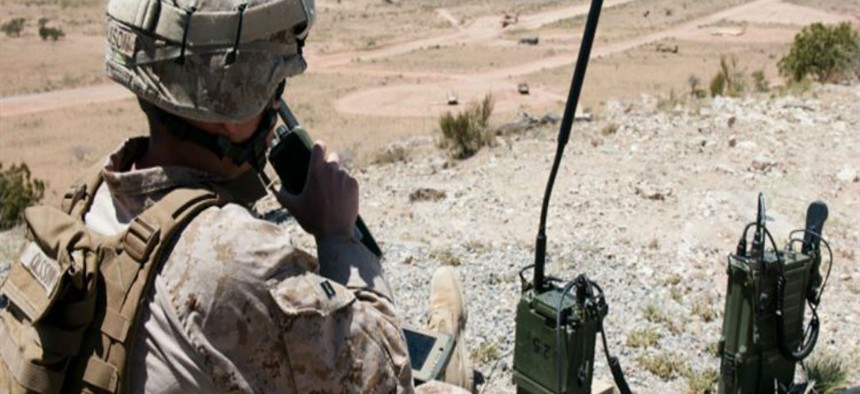Army develops two-channel software defined radio for dismounted soldiers
Future RFP to outline requirements for a new, two-channel software-programmable radio.
The Army is preparing to test a new two-channel handheld software programmable radio for dismounted soldiers that allows real-time data sharing during fast-changing combat scenarios.
The service plans to release a formal Request for Proposal and begin testing in the next few months, as a first step toward improving the currently deployed, single-channel Rifleman Radio.
Rifleman Radio is part of a family of software-programmable radios, which use NSA-certified encryption to safeguard information.
Handheld software-programmable radios are designed to permit forces on-the-move to share data, video, images and voice in real time across the force using high-bandwidth waveforms such as Soldier Radio Waveform (SRW). A two-channel option could allow faster hopping between nodes and increase security against interference or jamming attempts by adversaries.
Requirements work is now underway for the radio as the Army evaluates current and emerging threats with a mind to improving communication and hardening radio connectivity. The radios form a terrestrial network across the force without needing to rely upon a fixed infrastructure such as a static antenna or tower. The radios exchange IP data or packets of information in part because each radio not only transmits information but functions as a router or node on the network as well.
“We are working with the Army to define what the threats are and what their needs are with working on developments of waveforms,” said Dennis Moran, vice president of DOD development at Harris Corp.
During various combat assessments, Rifleman Radio and SRW allowed Ranger units to establish a mobile, ad hoc network. Using that network, squad leaders, commanders and dismounted infantry shared and viewed mission essential information using small, hand held, end user devices with display screens.
The devices displayed digital maps that allowed users to view surrounding terrain and to also locate nearby friendly forces, Army developers explained.
"The Rangers felt the radio was very effective for conducting infantry operations, especially at the small unit level," a senior Army official said. "Rifleman Radio allowed them to execute missions very rapidly because they had an improved awareness of where they were in relation to surrounding troops. Mission command decisions were achieved faster."
Using the software programmable Rifleman Radio and SRW, the Rangers were able to network voice, data and information across deploying units in austere environments, without needing to rely upon a fixed infrastructure or GPS system to communicate across the unit while on the move.
The first operational assessment, several years ago, marked the first formal combat use of the single-channel, software-defined Rifleman Radio. Rangers using Riflemen Radio during assault missions is a scenario the Army wants to build upon as jamming threats become more advanced, and the service prepares for the possibility of facing a technologically superior adversary.
The Army is also exploring radios engineered with a built-in ISR receiver that allows drone video convergence for dismounted soldiers. Harris is already working with Special Operations Command to develop and such a radio, called the RF-335, which will be tested this fall.
It is designed to utilize wideband waveforms and a datalink to support full-motion video from nearby drones, Moran added.
“In the past, someone on the ground would have a traditional comms radio and use an ISR receiver. This converges those capabilities into one platform by pulling down video from the air, cross-banding the video into a two-channel radio,” said Moran said.




